Blog Log 22 May 2011, Pen Shells & Gobies
 May 23, 2011
May 23, 2011

It was a busy Sunday along the marine fairways; huge vessels were plying up and down the straits between Singapore’s southern islands, this coupled with the big white clouds and strong winds, we feared that we were going to have less than desirable diving conditions. Yet when we turned into our dive site, the skies cleared up, the sun shone and with the heat building up beneath everyone’s wetsuit, everyone wanted to get into the water in a jiffy. (Above: Pulau Hantu Besar)
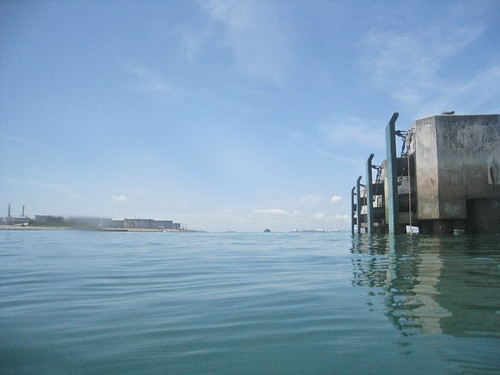
LOOK OUT FOR JELLYFISH! As much as everyone wanted to get into the water, divers were nervous about the dozens of huge, and small jellies that drifted near the water surface. So those that had already plunged into the water, were now in a rush to make their descent and get out of the way of the stinging cnidarians. (Above: Pulau Hantu Kecil jetty and Pulau Bukom)


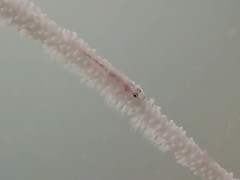

Gobies, gobies, gobies! There were plenty of them (Bryaninops sp.) all over the place today! They were practically on every whip coral or sea fan. I’d stopped looking at whip corals until Cindy called me over and showed me this beautiful moment of a whip goby and a sawtooth shrimp sharing a whip coral (last picture). I hovered around and above them for several minutes just taking in the moment. What a sight to witness! It shows that we have so much to benefit from being able to share with each other, despite our vast differences!
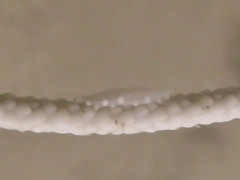
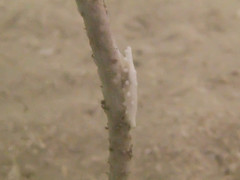
Something else we saw a lot of on the whip corals were ovulids (Primovula sp.) that are also known as allied cowries because each species tends to live with a specific host organism such as soft corals or sponges. Their adaptation to their host in form and colour is quite astonishing. They take on the shape, colour and texture of their hosts and usually it’s hard to tell where one animal ends and the other begins. Only a close look will reveal the mollusk on its host. Each cowrie has a soft mantle that matches the color and texture of its host although there are notable exceptions. Some species have false polyps, some don’t.
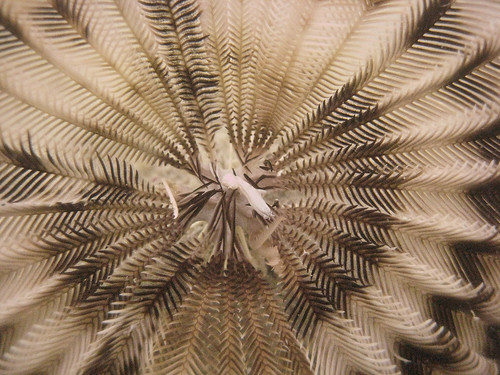
There were also plenty of crinoids (above). I shared these photographs of crinoids with some friends over dinner and they were just fascinated by it! “What is it?!” They asked. “It’s an animal. It’s got no eyes, but it does have a mouth and an anus. Which is all you need really!” At this point I had them hooked. So I continued, “They’re really ancient animals, they’ve found fossils of them 500 million years old!” By this point, my friends were at a loss of words. Also known as sea lilies, crinoids can be found in shallow parts of the ocean, and as deep as 6,000 meters! They are echinoderms, which means they are relatives of sea stars, sea cucumbers and urchins. Looking at them makes me feel like I’m looking through history, to the beginning of the ocean.
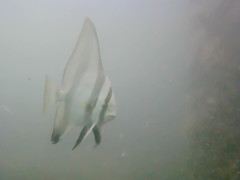
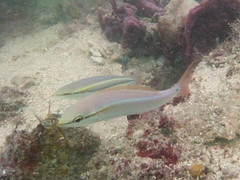
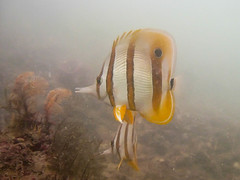

On to more modern animals, there were some gorgeous fish on the reef today. Top-left: While you’ve got your eyes peeled for tiny macro critters close to the reef, it can be quite startling to run into a large fish on the reef like this Long-finned batfish (Platax Penatus). Top-right: I was very pleased to be able to get a shot of both the Paradise whiptail (Pentapodus paradiseus) and Butterfly whiptail (Pentapodus setosus). These two fish are my all time favourite fishes in local waters. It was because when I was a rookie diver without a guide in Hantu, these fishes gave me company and entertainment throughout my dive in the dark depths. I was fascinated by their simple beauty and how curious they were. They were also very fast and it’s so challenging to get a picture of them, so I’m really pleased with this one. Bottom-left: Another fish that’s good fun to run into on the reef are these Copper-banded butterflyfish (Chelmon rostratus) which can be fast if they wanted, but are quite comfortable to feed as divers watch them closely. Finally, a fish that’s rather shy is this cardinalfish (Apogon sp.) Other cool fish I saw but didn’t get to photograph were Juvenile Oriental Sweetlips, Yellow-spotted rabbitfish, Yellow-tail barracuda, and an Emperor angelfish.
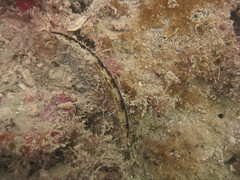
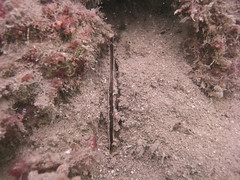
Something else I spotted a lot of were pen shells. Also known as Razor shells, these are large saltwater clams that are commercially harvested throughout tropical reefs for their flesh. The shells are fragile and have a long and triangular shape, and in life they are anchored in sediment with the help of a “silk” that the pen shell secretes. Pen shells have always intrigued me because they live a mysterious life buried into the ground. Humans have been harvesting them for a long time for food and there used to be a seemingly endless supply of them – harvesters would walk into the reef during the low tide and haul out kilograms of these mollusks, tossing their heavy shells back into the sea. Yet today, they are hard to see and most of the time I only see their lifeless and encrusted shells, so it was nice to see several alive and well today.

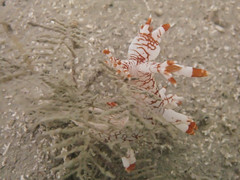
These bornella nudibranches were some of the large sea slugs I managed to find on the reef. There were plenty more nudibranches that were smaller than these, but I leave those to be spotted by the more talented and eagle-eyed volunteers!
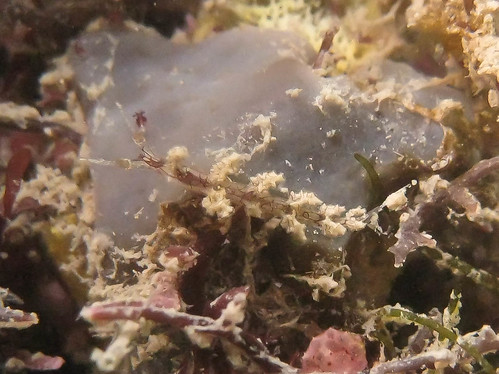
I was very pleased with myself when I spotted this tiny nudibranch! It was a huge accomplishment and I thought of Chay Hoon right away. She’d love to see it! If for any reason other than it’s so absolutely, incredibly tiny. I’m not sure what nudibranch this is.
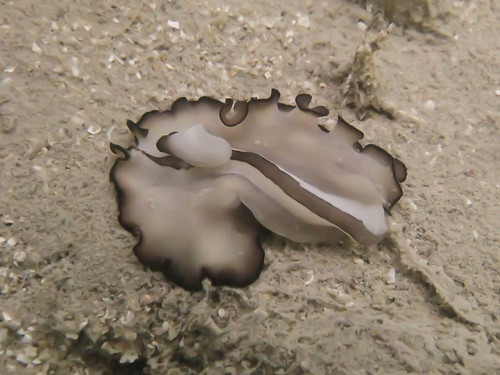
An unusual and slightly upsetting encounter was this marine flatworm which seemed to have a deformed mantle. I wonder what caused the deformity and if the reason/s might be similar to that which is believed to have caused deformities in frogs. I watched it for a few minutes and while most marine flatworms are very agile and can move quite fast, this one was undulating its mantle incessantly for very little gain.
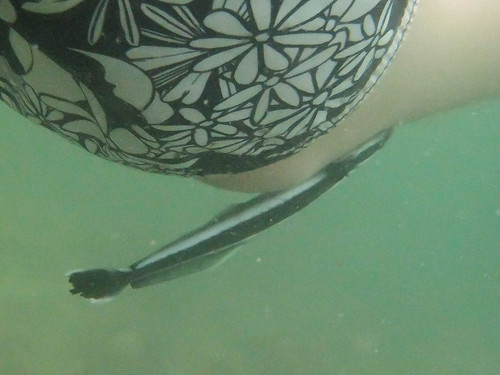
This blog post is getting kind of long today (there’re so many things I want to share!) so I’ve found a picture to wrap it all up – on my second dive, a small remora (Remora remora) hitched a ride on my knee. I feel bad though because I wasn’t swimming around much (remoras need a constant flow of water through their gills and cannot survive in still water) and I wasn’t leaving a trail of scraps behind me for it to feed on because, well, I wasn’t doing any feeding! Apart from it’s use as a cleaner fish, and plucking parasites off its hosts, remoras are also used as baitfish by fishermen – Fishermen in countries around the world use them by attaching a line to their tails and then releasing them. The remora will then swim off and attach itself to a large fish or turtle, which can then be pulled in by a careful fisherman. The remora is not held in high esteem as a food fish, although the Australian aborigines are said to eat them after using them on fishing trips. On the other hand, aborigines from the West Indies never ate their “hunting fish” and instead sang songs of praise and reverence to them. (Source)
To view more pictures from this dive, visit the Hantu Blog Gallery.
 Posted in
Posted in 



 content rss
content rss
COMMENTS